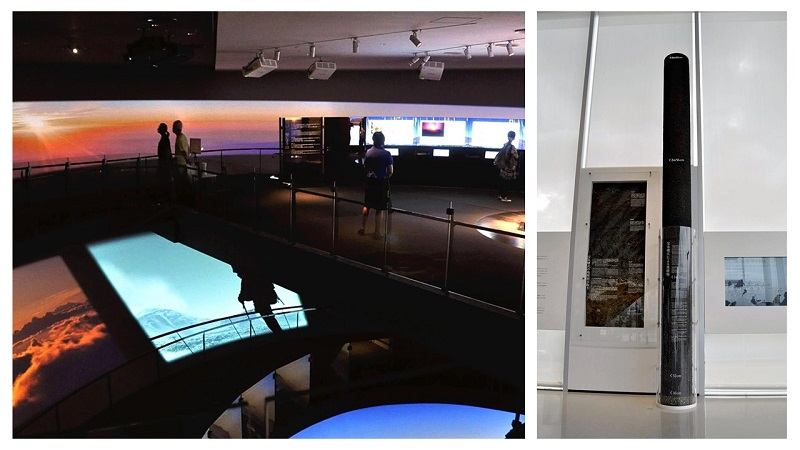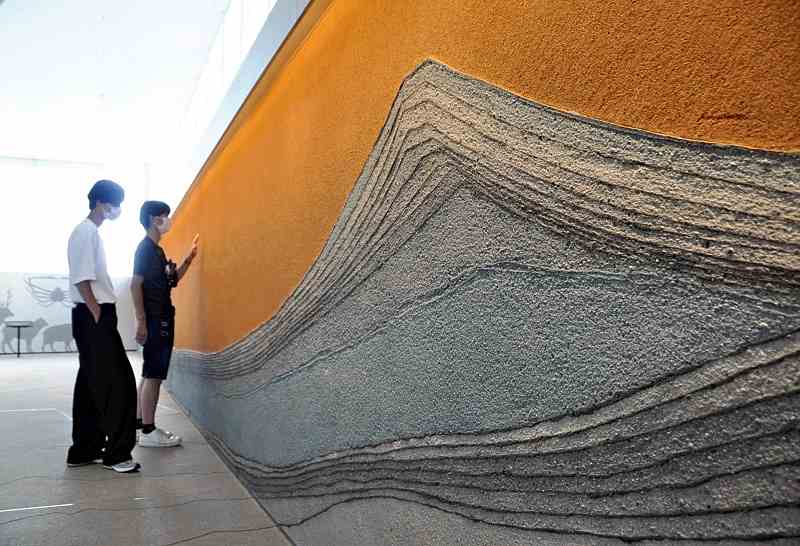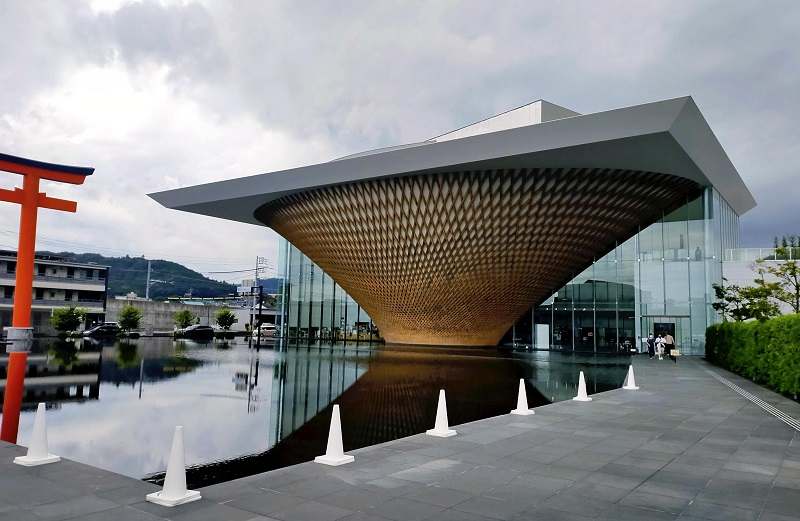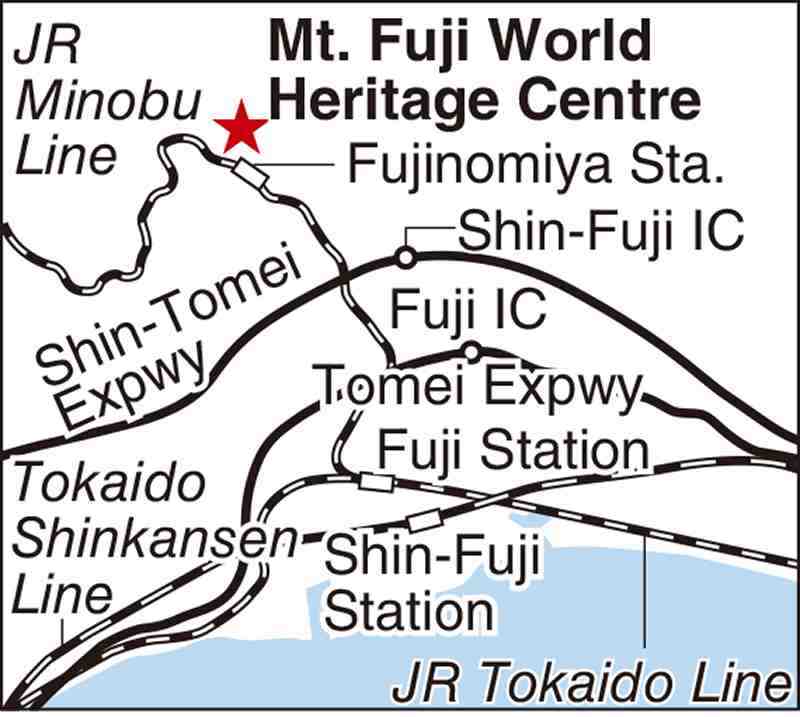Shizuoka: Spiral climb through Mt. Fuji heritage center reveals ancient origins, influence on faith, art

Left: Visitors can experience what it is like to climb Mt. Fuji by watching a video while walking up a spiral ramp. Right: A display indicates sediment of more than 3.9 meters was left in an area in Shizuoka Prefecture (the present-day Subashiri area of Oyama Town) by the massive Hoei eruption of Mt. Fuji that occurred in 1707.
9:30 JST, September 21, 2022
FUJINOMIYA, Shizuoka — The first thing you’ll see when walking up the spiral ramp at the Mt. Fuji World Heritage Centre, Shizuoka, is images of the mountain seen from the sea.
As you walk up the ramp, you can enjoy various views of the mountain. They include the fifth station, the forest line — located 2,500 meters above sea level — and around the summit.
Silhouettes of climbers and wild animals can be found on the walls. The sound of strong winds at the summit can also be heard.
Ascending the 193-meter-long ramp, visitors can feel a little like they are climbing Mt. Fuji.

A wall shows Mt. Fuji depicted in earthy hues.
A video was created by showing multiple still images one by one at regular, short intervals.
Mt. Fuji was registered as a World Heritage site in 2013. Volcanic activity is believed to have started about 100,000 years ago, and eruptions over the past 10,000 years have changed the shape of the mountain repeatedly. The present shape of the peak is said to have been sculpted around 2,300 years ago.
The center in Fujinomiya, Shizuoka Prefecture, opened in 2017 as a facility to introduce the origins and history of Mt. Fuji, as well as its influence on faith and art. The building has a distinctive shape based on that of “Sakasa Fuji,” or upside-down Mt. Fuji.

The building has a distinctive shape based on the image of “Sakasa Fuji,” or upside-down Mt. Fuji.
Descending the ramp from the top of the building, visitors can enjoy exhibits on volcanology, art, faith, animals and plants. It may seem there are not so many exhibits, but this is because the images and materials are shown only when requested on a touch screen. The museum is designed to not overload visitors with information.
Visitors also can stop by the movie theater to enjoy images of Mt. Fuji in each of the four seasons.
“Spriggan,” a manga serialized in a boys’ magazine from the 1980s to the ’90s, stimulated children’s curiosity with the depiction of a super-ancient civilization that flourished at the foot of Mt. Fuji.
Although it is unknown if such a civilization existed, a tour of the museum makes visitors distinctly aware of the fact that Mt. Fuji has been a part of people’s lives and culture throughout time.
I envied the people who grew up in the area around Mt. Fuji.

Mt. Fuji World Heritage Centre, Shizuoka
The museum was established to preserve the value of Mt. Fuji as an object of worship and a source of art for future generations. It is an eight-minute walk from Fujinomiya Station on the JR Minobu Line.
Address: 5-12, Miyacho, Fujinomiya, Shizuoka Prefecture
Hours: 9 a.m. to 5 p.m. Closed on third Tuesdays.
Admission: ¥300. Free for those under 15, and aged 70 and over, as well as people with disabilities and their attendants



